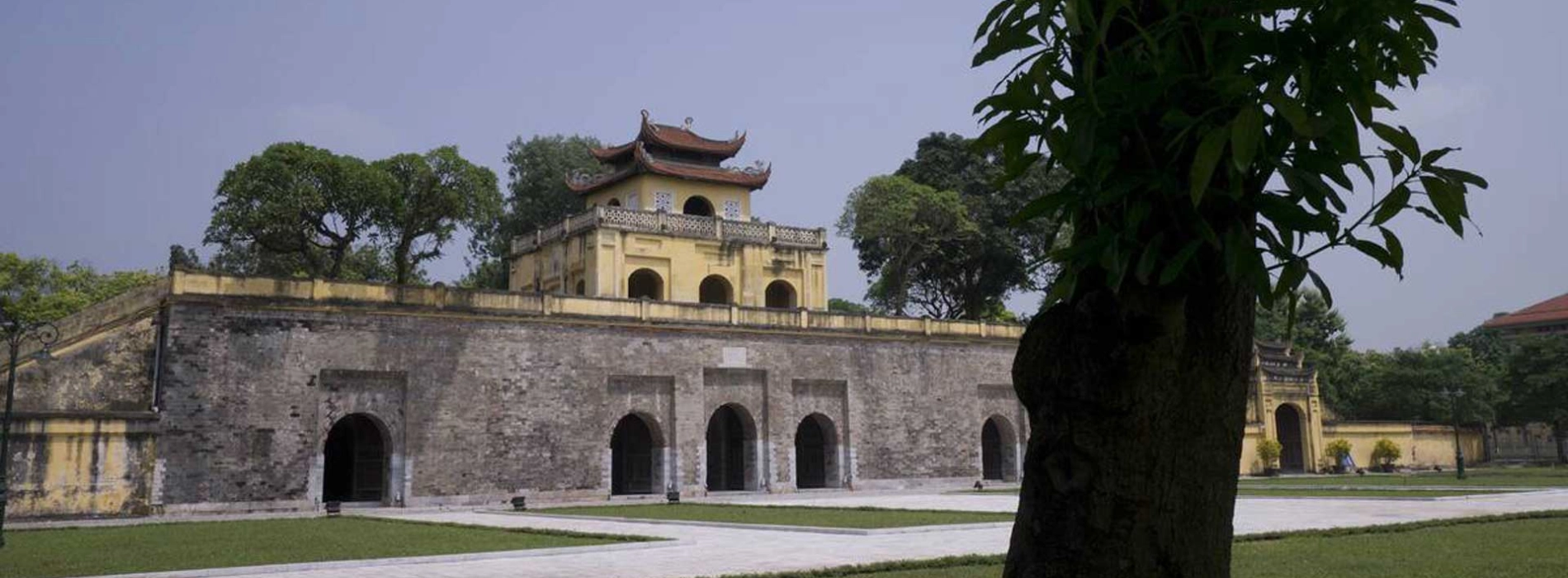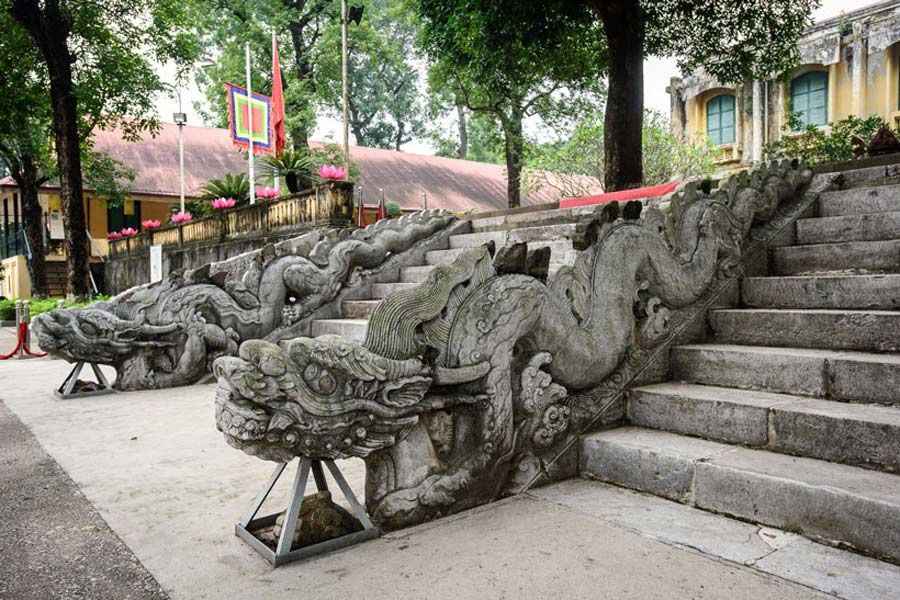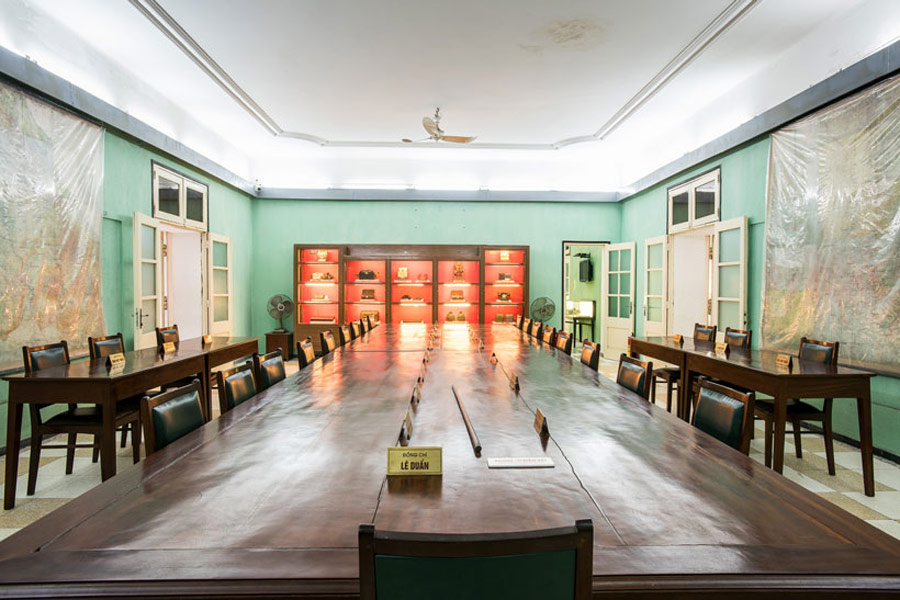Imperial Citadel of Thang Long

Admire the beauty of this historical site at nightOne of the oldest cities in the world, Hanoi is a vibrant city located in the heart of North Vietnam. In Hanoi, the past and present coexist, preserving the rich cultural heritage of the past through artwork, numerous remarkable historical monuments, and buildings. Perhaps the most notable of Hanoi's historical sites is the Imperial Citadel of Thang Long, also known as Hoang Thanh Thang Long, a UNESCO World Heritage site. Let Asia King Travel help you understand more about this wonderful site of Hanoi!
The Citadel's initial foundation was established in the 7th century, marking its beginnings. China was reportedly building a fortification in the region, and the country was invading Vietnam at the time. The capital was renamed Thang Long and relocated from Hoa Lu to Dai La in 1010. In the same location, atop the demolished fortress, the Citadel was constructed. For the next thirteen centuries, the Citadel had continued to be the epicenter of political authority in the area.
Under the Tran, Le, and Nguyen dynasties, the Imperial Citadel grew, although there were multiple instances of significant wartime destruction. Up until Emperor Quang Trung relocated the nation's capital from Thang Long to Phu Xuan in 1810, it served as the location of the Vietnamese Court. After that, Thang Long was no longer the capital of Vietnam.
 Admire the beauty of this historical site at night
Admire the beauty of this historical site at night
The majority of the buildings, including the royal residences, suffered significant damage during the French colonial era. A large proportion of the remaining buildings had been demolished by the 20th century. The Imperial Japanese Army utilized the Citadel as a detention facility for more than 4,000 French colonial soldiers who were taken prisoner in March 1945. After the Vietnamese Army seized control of Hanoi in 1954, the Citadel was converted into the Ministry of Defense's headquarters.
The Thang Long Imperial Citadel's ruin foundations were methodically excavated in the twenty-first century. Many artifacts and objects from the sixth to the twentieth centuries were unearthed in 2004. These items included wells, ponds, and the foundations of former palaces.
 Flag Tower at Imperial Citadel of Thang Long - Hanoi
Flag Tower at Imperial Citadel of Thang Long - Hanoi
The Flag Tower is regarded as one of Hanoi's most recognizable icons. The Tower, which rises to a height of 33.4 meters, is made up of four primary structures: the base, the second floor, the third level, and the summit. There were four doors on the third story, facing four different directions. The Vietnamese national flag is flown atop a cylindrical pillar at the top. Constructed in 1812 under the Nguyen Dynasty, the Flag Tower withstood the French colonial period, serving as a military outpost.
 Kinh Thien Palace at Imperial Citadel of Thang Long - Hanoi
Kinh Thien Palace at Imperial Citadel of Thang Long - Hanoi
The main relic in the complex is Kinh Thien Palace, which is located in the center of the Citadel. Built in 1428, it served as a venue for important national events and imperial celebrations. The base of the palace is 2.3 meters high, 41.5 meters broad, and 57 meters long. The steps are all that remain of Kinh Thien Palace today, despite it being a culturally valuable relic. Along the stairs are the elegant dragon statues fashioned out of green stones.
 Hau Lau at Imperial Citadel of Thang Long - Hanoi
Hau Lau at Imperial Citadel of Thang Long - Hanoi
Hau Lau, which means "the tower in the back," has three stories above ground and a basement. It was constructed out of brick. The Pagoda was built with princesses and queens in mind. Hau Lau was dubbed "Pagode des Dames" by the French. After Hau Lau sustained significant damage towards the end of the 19th century, the French reconstructed the monument as it is now.
 D67 House at Imperial Citadel of Thang Long - Hanoi
D67 House at Imperial Citadel of Thang Long - Hanoi
Code-named D67, the Citadel served as the Vietnamese People's Army's headquarters from 1954 to 1975. In the event of an attack, an emergency evacuation via a connected tunnel was possible. North of Kinh Thien Hall is where the home and tunnel are located. This area has a variety of rooms for use, including working, break, and meeting spaces. There are artifacts from the Vietnam War on exhibit, such as the aircraft's notice board, telegraphs, soundproof doors, and maps.
The Vietnam Military History Museum, Cua Bac Church, and Quan Thanh Temple are just a short stroll from the location, which is in the center of Hanoi. The distance from the Old Quarter's center is roughly two kilometers.
The location is conveniently accessible via motorbike, cab, or Grab. Bus travel is also a sensible choice because there is one right outside the door.
You may like: Hanoi Old Quarter Attractions